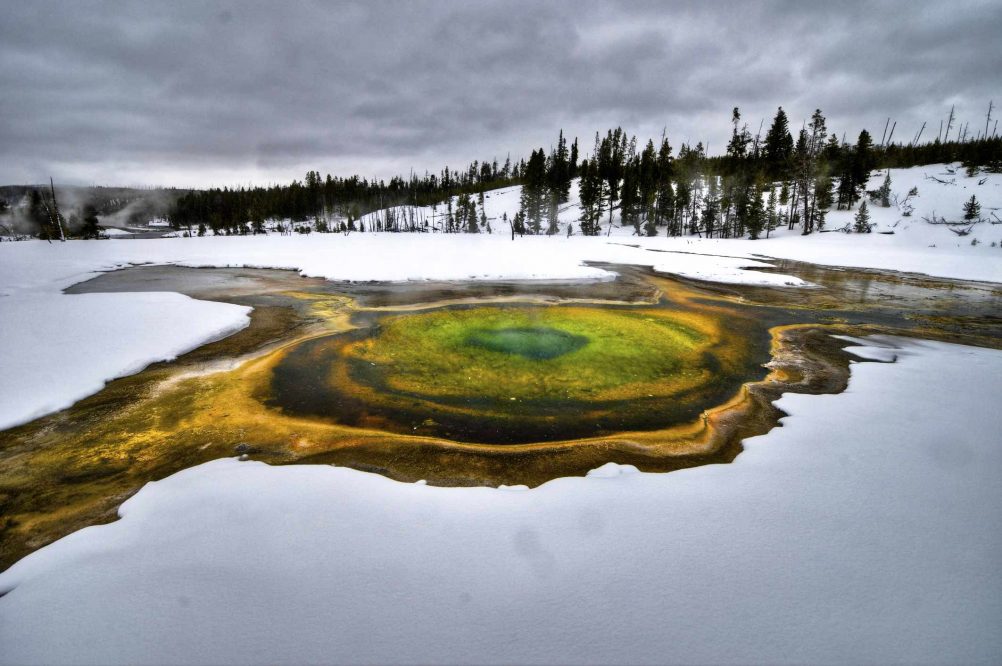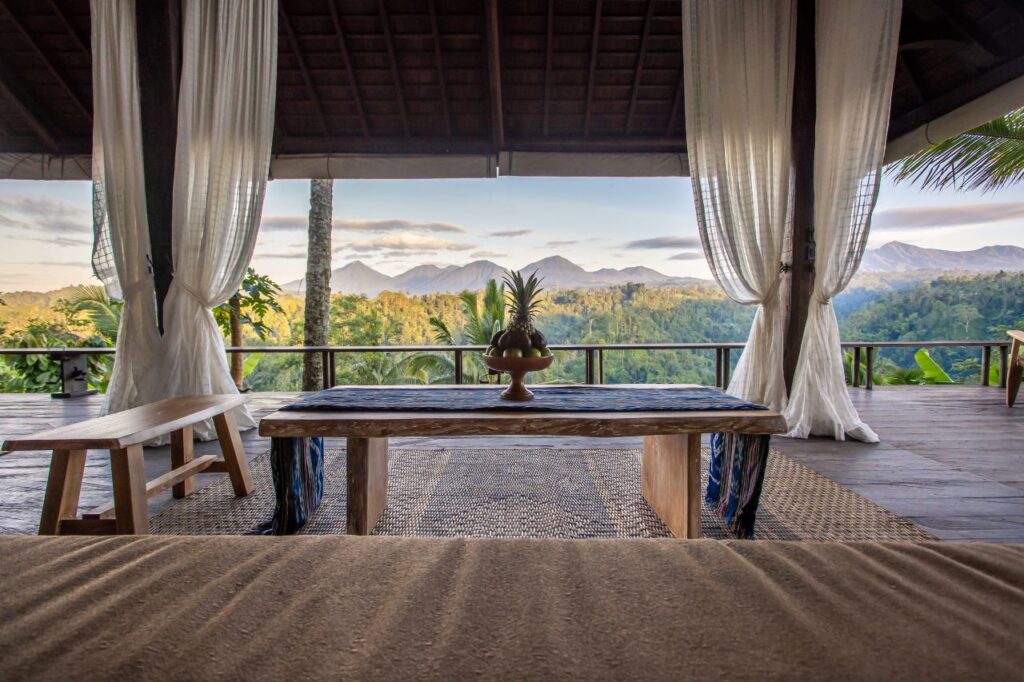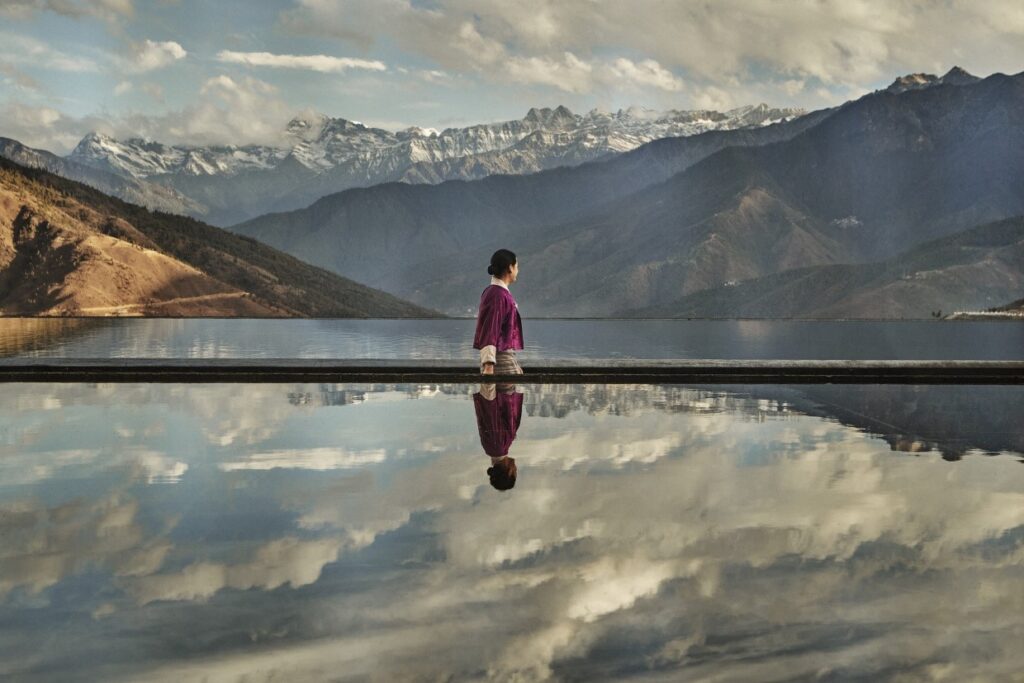The best time to visit Yellowstone National Park USA
Hot springs, snow drifts and wildlife – winter is a magical season.
Words by Ute Junker
Photos supplied
This article originally appeared in Traveller.
Stealth hunting this ain’t. The fox may be moving cautiously, stepping lightly, but against the steep drifts of white snow, his thick orange coat blazes as ferociously as a fire. Fortunately for the fox, his prey can’t actually see him. If all goes according to plan, his next meal will be one of the small voles and mice that wait out the winter in the subnivean layer, the narrow gap between the ground and the bottom of the snowpack.
The fox locates his prey by sound, tracking their scurrying movement beneath the snow. Suddenly, he springs high in the air, landing deep in the snowmass and emerging with a small morsel in his mouth. Today, he has found something to eat. Tomorrow he may not be so lucky.
Yellowstone National Park in winter is an inhospitable place. In summer, the one million hectare park is a place of lush meadows and verdant forests, studded with fast-flowing rivers and ringed by towering mountains, where huge herds of bison and elk, moose and bear graze peacefully. In winter, it is transformed into a dazzlingly icy landscape, with metre-high snowdrifts stretching for miles and trees laced with hoar frost that glitters like a Fifth Avenue Christmas display against the clear blue skies.
“I love the majesty and the silence of Yellowstone in winter,” says Jim Sundby, who leads Yellowstone tours throughout the year for high-end touring company, Tauck. “You have the place to yourself. There are not many places in North America where you can go and feel you are the only person on earth.”
Yellowstone is an unlikely place to soak up the solitude. During the summer months, the park receives around four million visitors. Traffic is often gridlocked; at key attractions such as Old Faithful geyser, you may need to push your way through crowds. In the winter, by contrast, you may see just a handful of other vehicles in a day. Pull up to gaze at torrential waterfall, frozen mid-cascade, and you will probably find yourself the only person at the lookout.
Yellowstone’s famous geothermal features are also at their best in winter, when the plumes of hot steam are thrown into sharp relief. “Few people realise how many geothermal features the park actually has,” Sundby says. Everywhere we go we see steaming hot springs, bubbling mud pots, and fumaroles puffing out from holes in the ground.
The wildlife spotting is also remarkable. Yellowstone’s famous bears may be hibernating, but winter is the time to see species such as bighorn sheep and pronghorn antelope, which spend their summers on remote mountaintop summer habitats
“There will be lots of eye candy,” Sundby assures us on our first day. “It’s actually easier to see many species in winter, because they stand out more on the snow pack.” In summer, the high grass hides many species from view. It’s not just foxes which stand out against the snow: traversing the Lamar Valley early one morning, we thrill to watch a pack of wild grey wolves going about their business.
Wolves were reintroduced into Yellowstone in 1995, and winter is by far the best time to see them. As our snowcoach pulls up close to the slope along which the wolves have spread out, we encounter the closest thing we have found to a crowd: half a dozen people, rugged up in hardy outdoor gear and equipped with serious long distance lenses. “The wolf watchers always come out in winter,” Sundby explains.
With a fox sighting and a wolf sighting on the same day, we are enjoying what the locals call a Two Dog Day. If we can find a coyote, we will have chalked up the ultimate Yellowstone achievement: a Three Dog Day. As we crest a high mountain pass, we feel a wave of triumph as we spot not one, not two, but three coyotes making their way across snowdrifts. Three cheers for three dogs!
Although we don’t see many other vehicles, that doesn’t mean the roads are empty. Plenty of wildlife prefer using the roads, where the snow has been packed down, to the deep drifts elsewhere in the park. My particular favourites are the bison, which regularly stroll past our snowcoach in small herds, their shaggy coats fringed with frost. These mighty beasts once roamed the country in tens of millions. However, as Europeans expanded westwards across the continent, they embarked on an extraordinary cull of the bison herds – partly because the beasts presented problems for the expanding railroads, and partly because the Indians relied on the bison for sustenance. Kill the bison, the theory went, and the Indians will go, too. By the early 19th century, bison numbers had been reduced to just two dozen pure bred beasts. It took extensive farming of the animals to get numbers back up.
One of the things that surprises me is the sheer variety of animals we see: eagles, squirrels, even swans gliding past snow-covered riverbanks. One of the smallest is a tiny bird called the chickadee that looks too fragile to survive the extreme temperatures. Sundby tells us that’s pretty much the case.
“They are literally living day to day,” he says Sundby. “If they don’t get enough energy during the day to shiver right through the night, they are not going to make it.”
All our animal encounters are peaceful but, as Sundby points out, these are wild animals, and unexpected incidents do occur. Several years ago, one of our hotels, the Mammoth Hot Springs Hotel, was the scene of what has become known as the Valentine’s Day Massacre. A wounded elk cow, trying to escape a pack of wolves, made a desperate run towards the hotel, and died on the front steps. No such dramas occur during our stay, although we do snap shots of a group of elk making themselves comfortable on the hotel lawn. They are regular visitors, one staffer tells me: “We call ‘em the ladies who lunch.”



